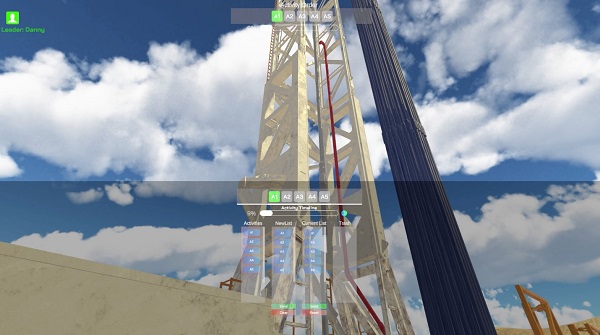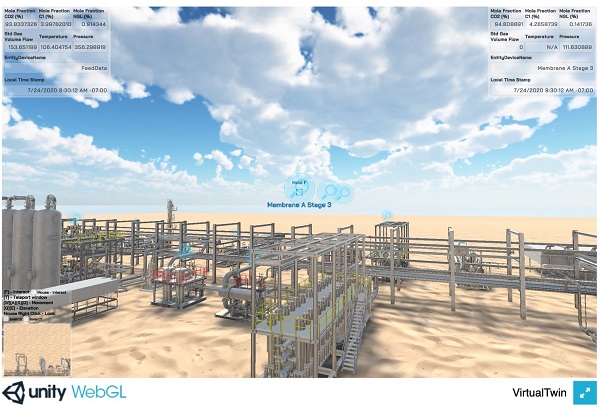Virtual Twin in Oilfield
I love science fiction. Historically science fiction was the entrepreneurs’ inspiration and motivation source. By chance or not, but some of the “future” stuff came from science fiction.
In 2011, Ernest Cline wrote his famous future utopia “Ready Player One”, where humanity has created a virtual reality “Oasis” that has substituted the real world for millions of people on the Earth.
In the middle of COVID pandemic many of us realized that great deal of the tasks we do, can be done remotely. Even before that, following the vibes of science fiction and advances in technology Schlumberger STIC started to create “Virtual Twins”.
Software Technology Innovation Center (STIC) in Menlo Park, California was created in 2014 to challenge the status quo in energy industry and explore technologies that would create a great leap forward in product and business efficiency. While exploring the path of asset and process visualization, we’ve done concepts of virtual twins on multiple levels; planning, simulation, real-time, and for multiple domains, unconventional completions, drilling, field developing and midstream processing.
Imagine every piece of equipment, every valve and bolt of your actual location is represented in virtual reality to a photographic level of detail. Imagine that you can host meetings "on location” without exiting your office. Some may ask why would you need it? Well, multiple purposes but mainly because of the speed. The speed of communication, the speed of synchronization and information adsorption. Scientists say that when a person is in virtual reality, the brain adsorbs the information as if it was a real experience, which means compared to books or videos, one will react quicker, learn better, synchronize faster. That’s where the magic happens.
Unconventional completions
When we’ve started the “Frac Tetris” project, we wanted to create a virtual copy of every fracturing location to ultimately increase communication efficiency for all the parties involved in the process of unconventional completions.
The concept is based on visualization of the work environment of a wellsite location. Frac virtual twin puts equipment and auxiliary objects on a real high definition map. It creates a visual copy of the location with the possibility for multiple users to connect to this 3D environment. Because of analogy with multiplayer games, we called it “Fortnite” of wellsite planning. Gaming environment is efficiently accompanied by augmented reality (AR) for the execution. When the crew is getting to the field, they can effectively see the placeholder holograms for the equipment that was previously placed in 3D environment on a planning phase.
The product workflow has been organized in four consecutive operational steps associated as described on Fig 1.

First, the workflow takes drone images of the location to create an orthomasaic—a map layer stitched of the geotagged images. Second, the workflow moves the image of the location into a collaborative 3D environment that allows connection from multiple devices, including PC, Mac, iOS, Android, and virtual reality equipment. The third step transfers location coordinates into an AR system and visualizes images of equipment in a field on a mobile device. This step allows for seamless connection between planning and execution, as every object is dynamically copied into AR with respect to its geographical coordinates or position. The workflow is actively deployed for fracturing locations in Texas, for every location it would create a separate “workspace”. Users can go to a “workspace” leave their notes and comments, or simply discuss all the ongoing activities while being inside an immersive copy of the location.
Drilling
Similar to unconventional completions we transferred current process of “drilling the well on paper” (DWOP) into the 3D immersive environment. In classic DWOP, a representative from each company, who will support the drilling operation, is physically present to review the operation one action at a time. The operations are reviewed for timing, sequence, and action. The virtual twin is used to enhance the experience of this exercise or completely move it to the virtual reality rig.

The workflow consists of choosing a plan file from the DrillPlan coherent well construction planning solution, then virtual DWOP will create a room and import all the meta data such as comments, activity time, drill depth and activity depth. Users can look at the animated activities, operations sequence and choose to collaborate or make changes in real time. The whole workflow is accompanied with a combination of gaming and real-world features to improve the user experience: 3D avatars, white boards, notes capture, chat and voice communication. Each of these can be experienced in VR, on a mobile or PC mode.
Virtual Twin for Gas processing facility

This gas processing virtual twin has implemented the 3D environment in a web browser using Unity WebGL. It connects to DELFI cognitive E&P environment IoT data streams and visualizes real-time data at places where the measurements are taken. The typical workflows for gas processing dynamic twin would include facility walkthrough, check for the status of operations, visualizations of process and scenario simulations, troubleshooting alerts or repair tickets assignments to the exact component of actual equipment.
With connecting IoT sensors stream we’ve taken a step to make virtual twin dynamic. It displays processes and allows the human brain to make inferences from what it sees.
Now this is far from the end, and the creation of “Oilfield Oasis” will require some more effort. Our ambitions are towards making virtual twin real-time. Computer vision, AI and object tracking technologies will all play a role in its conception. The combination of these components together with GPU-powered inference at the edge, will allow for the translation of activity logs into process mapping and animated avatar actions inside the virtual twin.
Every person and every moving piece of equipment on actual location could become live inside the real-time virtual twin. Operational AI can learn by overseeing the operations, it will create scenarios and simulations to prevent injuries and avoid NPT.
Buckle up for “self-driving” operations!
Author information: Andrey Konchenko is a subject matter expert in oilfield production at STIC (Software Technology Innovation Center) in Menlo Park, California. Before coming to STIC, Andrey was a production stimulation technical expert for special projects of Schlumberger around Russia and Central Asia. His main goal is to bridge the digital innovations of Silicon Valley with production and unconventional completions product lines of Schlumberger.

